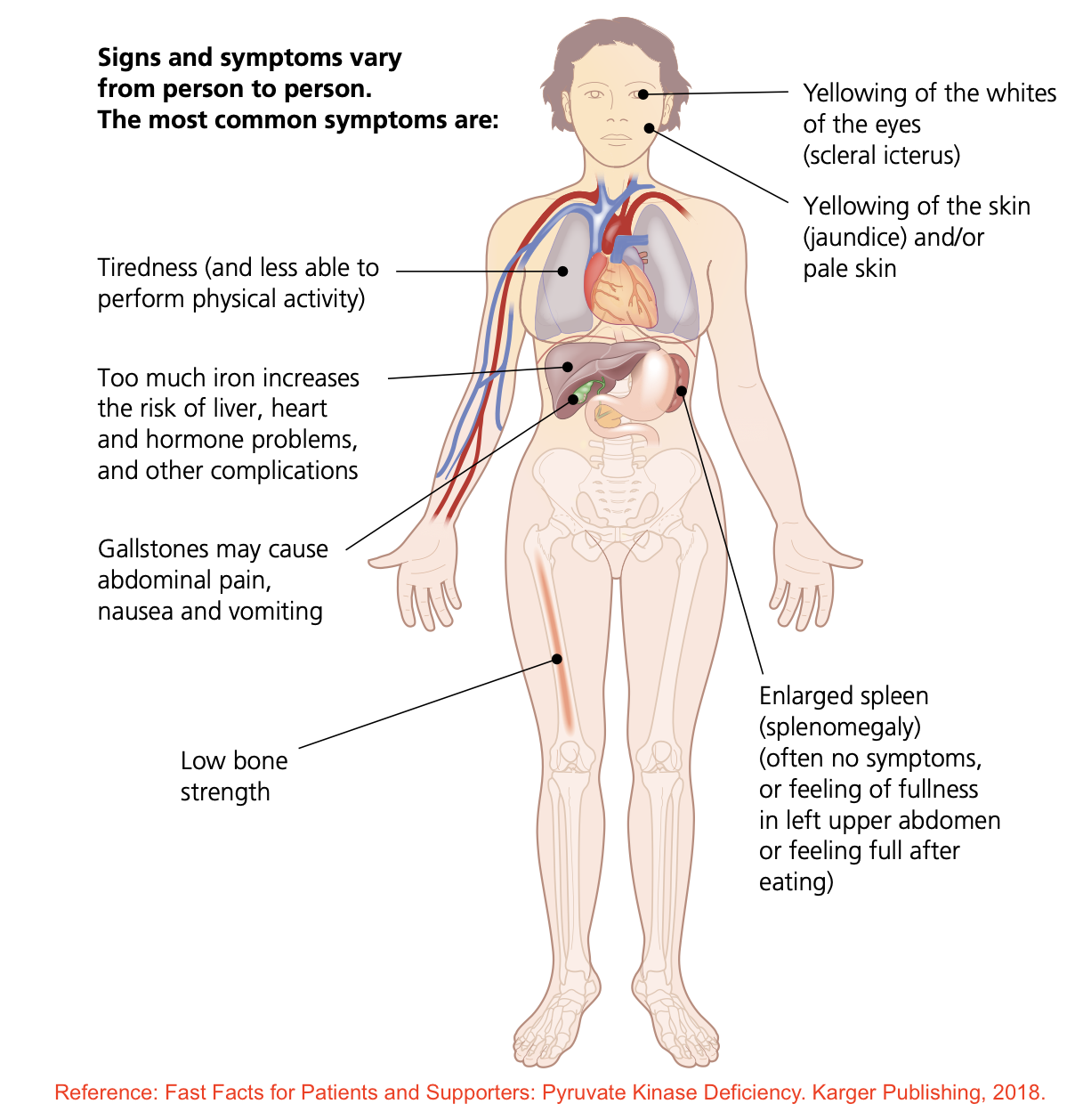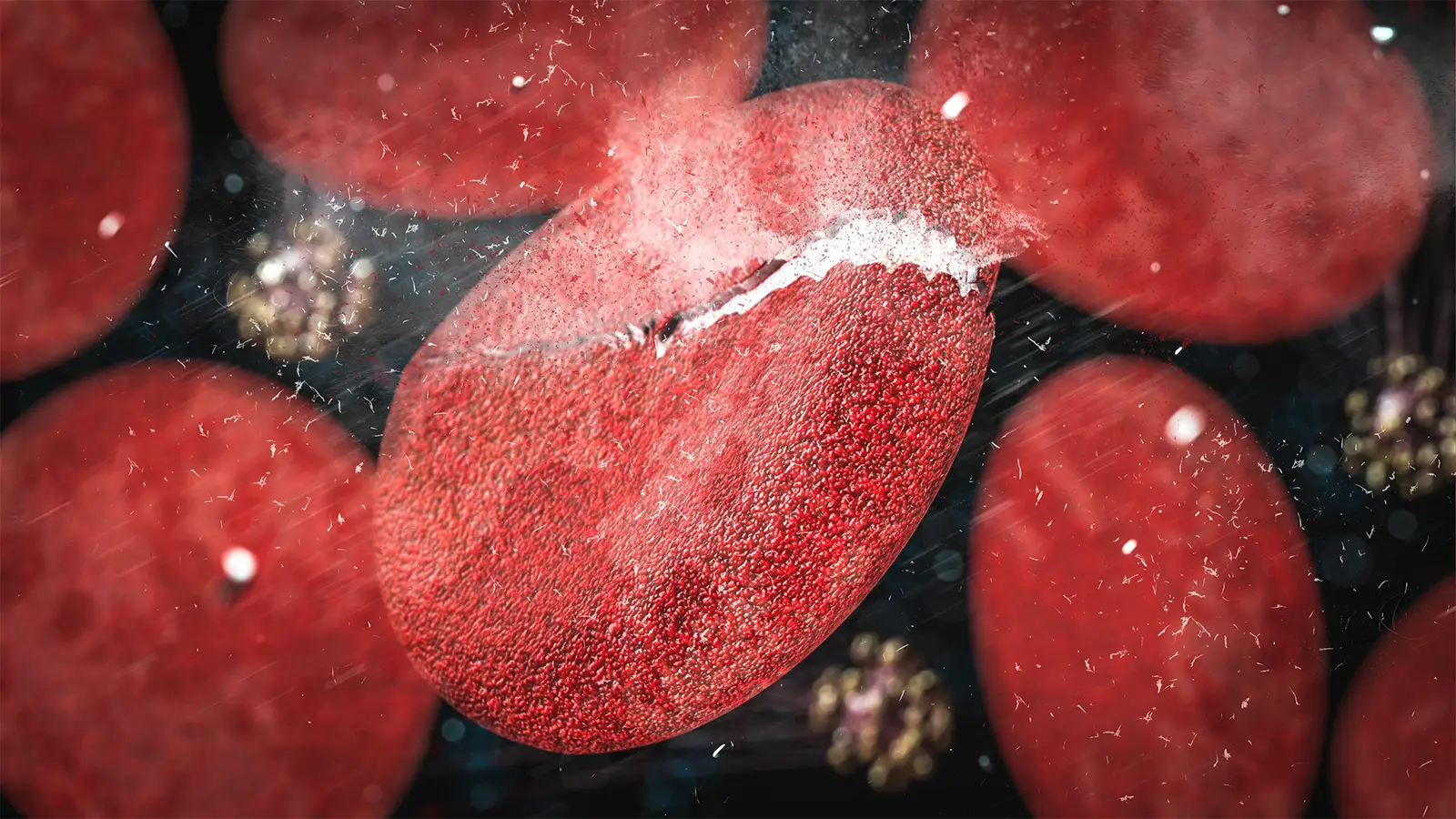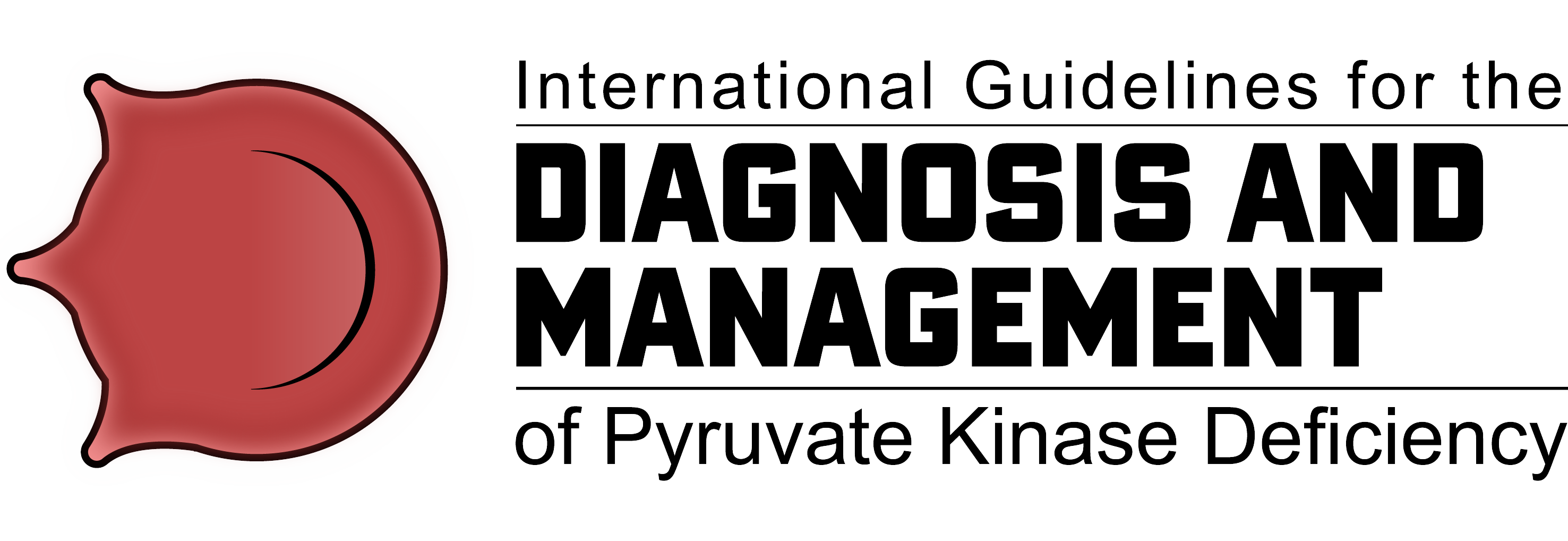Understanding PKD
What is pyruvate kinase deficiency?
Pyruvate kinase deficiency (also called PK deficiency or PKD) is a red blood disease that affects people whose bodies don’t make enough of the enzyme pyruvate kinase. People with this rare blood condition are often born with it, inheriting a damaged gene from each of their parents in an autosomal recessive pattern. It is classified as a rare, inherited anemia and causes iron overload that can cause long-term damage to the body.
It is estimated that PK deficiency affects 1 in 100,000 to 1 in 300,000 people worldwide and is pan-ethnic.


What is pyruvate kinase?
Pyruvate kinase is an enzyme that is made in the liver, muscle, and red blood cells and helps convert carbohydrates from food (called glucose) into energy for cells. PK deficiency affects red blood cells (RBC), and without enough of the enzyme, RBC can’t get the energy they need to function, so they start to break down and die. The spleen destroys the broken red blood cells, further eliminating them from circulation.
PK deficiency results in hemolytic anemia
Red blood cells are responsible for circulating oxygen in the body, so when red blood cells break down faster than the body can replace them, this causes a condition called hemolytic anemia. Healthy red blood cells live approximately 120 days (about 4 months) while the red blood cells of people affected with PK deficiency last roughly a few days to weeks. Unconjugated bilirubin is a byproduct of hemolysis that increases in people with PKD and may result in jaundiced skin and eyes, and gallstones.

Symptoms of PK deficiency
Red blood cells are responsible for circulating oxygen in the body, so when red blood cells break down faster than the body can replace them, this causes a condition called hemolytic anemia. Healthy red blood cells live approximately 120 days (about 4 months) while the red blood cells of people affected with PK deficiency last roughly a few days to weeks. Unconjugated bilirubin is a byproduct of hemolysis that increases in people with PKD and may result in jaundiced skin and eyes, and gallstones.
People with PK deficiency live with symptoms of anemia such as:
- fatigue
- tiredness
- shortness of breath
- lethargy
- headache
- brain fog
- problems with concentration
- bone pain
While anemia decreases people’s quality of life, the serious, long-term impacts of iron overload are life-threatening. Too much iron in the body is toxic and can be stored:
- in the heart leading to arrythmia and heart failure
- in the liver, leading to cirrhosis, enlargement, or liver cancer
- in the endocrine organs, leading to hormone-related problems like diabetes, thyroidism, and delayed puberty
- in the joints leading to arthritis
Other symptoms of PK deficiency include:
- pale skin
- jaundice of the skin and eyes
- gallstones
- enlarged spleen
- leg ulcers
- osteopenia or osteoporosis
- poor appetite
- pulmonary hypertension
- thrombosis
Disease severity:
People living with PK deficiency experience the disease across a wide spectrum. Some people don’t know they have it even though their hemoglobin levels may be lower than normal. However, other people are deeply impacted, needing wheelchairs to assist with mobility. Some people with PK deficiency can run, hike, work full-time jobs, whereas others may only be impacted when they have a cold or infection, and others rely on social networks or family for income and caregiving because they’re unable to maintain full-time employment. PK deficiency can affect learning and memory differently from child to child and is often enhanced with supportive treatment and modified school schedules. Chronic, life-long anemia of PK deficiency impacts people differently, but everyone requires regular monitoring and supportive treatment regardless of their symptoms.
